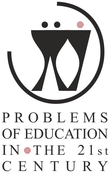INFLUENCE OF ORGANISATIONAL FACTORS ON THE IMPLEMENTATION OF PHYSICAL EDUCATION IN EUROPEAN TERTIARY INSTITUTIONS
| Title | INFLUENCE OF ORGANISATIONAL FACTORS ON THE IMPLEMENTATION OF PHYSICAL EDUCATION IN EUROPEAN TERTIARY INSTITUTIONS |
| Publication Type | Journal Article |
| Year of Publication | 2020 |
| Authors | Podstawski, R, Borysławski, K, Zurawik, M, Bukova, A, Masanovic, B, Ihasz, F, Marković, M, Omelan, A |
| Journal | Problems of Education in the 21st Century |
| Volume | 78 |
| Issue | 6 |
| Start Page | 1027-1037 |
| Pagination | Continuous |
| Date Published | December/2020 |
| Type of Article | Original article |
| ISSN | 1822-7864 |
| Other Numbers | E-ISSN 2538-7111 |
| Keywords | European tertiary institutions, higher education, organisational factors, PE curriculum, physical education, university college students (UCS) |
| Abstract | The purpose of higher education is to produce active and intellectually well-rounded individuals yet, the transition to higher education seems to have deleterious effects on university and college students’ (UCS) fitness levels and physical activity (PA). |
| URL | http://oaji.net/articles/2020/457-1607330264.pdf |
| DOI | 10.33225/pec/20.78.1027 |
| Refereed Designation | Refereed |
| Full Text |
